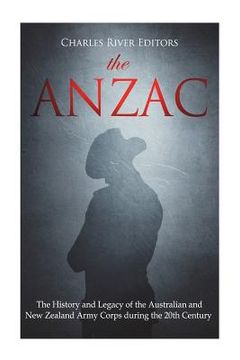The ANZAC: The History and Legacy of the Australian and New Zealand Army Corps during the 20th Century (en Inglés)
Reseña del libro "The ANZAC: The History and Legacy of the Australian and New Zealand Army Corps during the 20th Century (en Inglés)"
*Includes pictures *Includes online resources and a bibliography for further reading A land of almost 3 million square miles has lain since time immemorial on the southern flank of the planet, so isolated that it remained almost entirely outside of European knowledge until 1770. From there, however, the subjugation of Australia and New Zealand would take place rapidly. Within 20 years of the first British settlements being established, the British presence in Terra Australis was secure, and no other major power was likely to mount a challenge. In 1815, Napoleon would be defeated at Waterloo, and soon afterwards would be standing on the barren cliffs of Saint Helena, staring across the limitless Atlantic. The French, without a fleet, were out of the picture, the Germans were yet to establish a unified state, let alone an overseas empire of any significance, and the Dutch were no longer counted among the top tier of European powers. New Zealand and Australia lay at an enormous distance from London, so their administration was barely supervised. Thus, its development was slow in the beginning, and their importance remained narrowly defined, but as the 19th century progressed and peace took hold over Europe, things began to change. Immigration was steady, and the small spores of European habitation there steadily grew. At the same time, the Royal Navy found itself with enormous resources of men and ships at a time when there was no war to fight. British sailors were thus employed for survey and exploration work, and the great expanses of Australia attracted particular interest. It was an exciting time, and an exciting age, as the world was slowly coming under European sway, and Britain was rapidly emerging as its leader. Thanks to British actions there, and further imperialistic ventures in Africa in the 19th century, New Zealand and Australian soldiers would be used at home and abroad to fight on behalf of the British Empire, most notably during World War I. Today, the ANZAC is best known for the controversial Gallipoli Campaign of World War I, fought against the defending Ottomans far away from the more memorable Western Front. Early in the war, the Ottomans knew the Dardanelles strait would most certainly be attacked and had prepared significant defenses. The plan drafted by the then First Lord of the Admiralty, Winston Churchill, was meant to destroy Ottoman defenses along the Dardanelles. However, Allied forces troops were unable to penetrate the Ottoman defenses, advancing only about 100 meters from the shores. The Ottomans, led by German General Liman von Sanders, further reinforced their positions. The later attempt of the British to establish a new beachhead was more successful, yet the British government refused to send significant reinforcements. The Gallipoli Campaign has been remembered as the Allies' biggest disaster of the war. While some of the great battles like the Somme and Verdun saw greater bloodshed in a shorter period of time, the grueling conditions and hopelessness of the Allied position in the Dardanelles still holds the Western imagination, and as a result, the brutal fighting also helped forge the identity of Australia and New Zealand. Still in the process of finding themselves as independent countries, they created their national identity on the beaches of Gallipoli. The grit and endurance of the ANZAC soldiers is remembered fondly in both nations over 100 years later, and April 25 is celebrated as ANZAC Day in both nations. Given their stellar legacy, it is little surprise that ANZAC soldiers were used by the British Empire for the next several decades, most notably in World War II, ensuring that even after the British Empire declined, the Australian and New Zealand troops' contributions to the Commonwealth remain a source of pride.

